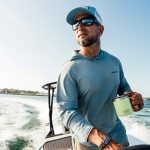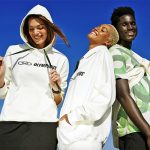EssilorLuxottica and VF Corp. have entered into a definitive agreement for EssilorLuxottica to acquire the Supreme brand from VF for $1.5 billion in cash. EssilorLuxottica is the parent company for the Oakley, Native Eyewear, Ray-Ban and Costa sunglass brands. VF Corp. closed on its acquisition of Supreme in December 2020 for an aggregate base purchase price of $2.1 billion.
“In EssilorLuxottica, we have a unique partner that understands that we are at our best when we stay true to the brand and continue to operate and grow as we have for the past 30 years. This move lets us focus on the brand, our products, and our customers while setting us up for long-term success,” said Supreme Founder James Jebbia.
Supreme opened its doors on Lafayette Street in downtown Manhattan in April 1994 and became the home of New York City skate culture. At its core was a group of neighborhood kids, New York skaters and local artists who became the store’s staff, crew and customers.
“We see an incredible opportunity in bringing an iconic brand like Supreme into our company, commented Francesco Milleri, chairman and CEO, and Paul du Saillant, deputy CEO at EssilorLuxottica, in a joint media statement. “It perfectly aligns with our innovation and development journey, offering us a direct connection to new audiences, languages and creativity. With its unique brand identity, fully-direct commercial approach and customer experience – a model we will work to preserve – Supreme will have its own space within our house brand portfolio and complement our licensed portfolio as well. They will be well-positioned to leverage our Group’s expertise, capabilities, and operating platform.”
Last year, analysts called out VF’s Supreme acquisition as a source of much of the company’s pain, notably due to the steep $2.1 billion price tag and the debt the company took on to fund the transaction using some proceeds from senior notes it issued in April 2020, along with commercial paper borrowings.
When S&P downgraded the company’s issue-level ratings on VF’s unsecured debt, it noted its leverage was elevated because of the EBITDA decline related to the pandemic fallout. S&P expected the Supreme acquisition to increase VF’s leverage and extend the timeline to reduce it back to pre-pandemic levels.
Supreme contributed $538 million of revenue and $166 million in operating income during VF’s 2024 fiscal year.
The company said Supreme had its strongest start to a season in Q2 last year than it had in a couple of years, with double-digit revenue growth in the quarter.
The August opening of Supreme’s new store in Seoul was said to be off to “a terrific start and has delivered impressive results across a number of metrics,” which VF said was a strong proof point on the road map of the brand’s growth strategy, aimed at expanding access to the brand to more consumers globally.
Supreme was the only VF brand called out for its strong global performance in the fiscal third quarter. Supreme reportedly saw its positive momentum from the second quarter continue with broad-based growth across regions and benefited from entry into Korea with the ongoing strong performance in the new store in this market that opened in August. Overall, strong sell-through across product categories led to improving profitability. It is the only brand mentioned with inventory growth as the company works to support the growth.
VF Corp. did not report on the Supreme brand in the fiscal fourth quarter as it had already been tagged for sale to raise cash and cut debt in its turnaround efforts.
The Supreme brand was obviously in growth mode but saddled with debt issues and a lack of cohesion with the VF business and its operation and sourcing models. For instance, VF wrote about the risks of the Supreme business in its most recent 10-K filing.
“The Supreme brand employs a different business model than the rest of our brands and is subject to unique risks because of its focus on frequent, weekly and limited product drops through the direct-to-consumer channel,” the company said. “The Supreme business model has different characteristics from the business models which VF and its brands have historically employed. These different characteristics may include product volume requirements, product seasonality, product design and production rates, and consumer concentrations and demand.”
VF went on to say a failure to make the necessary adaptations to its operations to address these different characteristics, complexities and market dynamics could adversely affect VF’s revenue, business condition and results of operations.
“Under VF, Supreme expanded its presence in the key markets of China and South Korea and has returned to delivering strong growth,” noted Bracken Darrell, president and CEO of VF Corporation. “However, given the brand’s distinct business model and VF’s integrated model, our strategic portfolio review concluded there are limited synergies between Supreme and VF, making a sale a natural next step. Alongside the other notable brands in EssilorLuxottica’s portfolio, Supreme and its talented team will be well-positioned for continued success.”
Darrell continued, “While we will always look to adjust the VF portfolio from time to time, this transaction gives us increased balance sheet flexibility. It also supports our overall program to better position the company for long-term growth and more normalized debt levels.”
The transaction is expected to close by the end of calendar year 2024, subject to customary closing conditions and regulatory approvals. The Supreme brand runs a digital-first business and 17 stores in the U.S., Asia and Europe. The sale of Supreme is expected to be dilutive to VF’s earnings per share in fiscal 2025.
While some may argue that selling a business for less than what you paid for it less than four years prior, the realities of the multiple write-downs against the Supreme business has to be considered.
- VF recorded goodwill and intangible asset impairment charges of $394.1 million and $340.9 million, respectively, in the fiscal year ended March 2023 related to the Supreme reporting unit.
- During the second quarter of fiscal 2023, VF determined that a triggering event had occurred requiring a quantitative analysis of the Supreme reporting unit goodwill and indefinite-lived trademark intangible asset.
- As a result of the impairment testing performed, VF recorded impairment charges of $229.0 million and $192.9 million to the Supreme reporting unit goodwill and indefinite-lived trademark intangible asset, respectively.
- During the fourth quarter of fiscal 2023, in connection with its annual impairment testing, VF performed a quantitative analysis of the Supreme reporting unit goodwill and indefinite-lived trademark intangible asset.
- As a result of the impairment testing performed, VF recorded additional impairment charges of $165.1 million and $148.0 million to the Supreme reporting unit goodwill and indefinite-lived trademark intangible asset, respectively.
- In fiscal 2024, VF Corp. operating margin decreased to negative 0.3 percent from positive 2.8 percent in fiscal 2023, primarily due to the above issues with Supreme and similar actions taken with other current portfolio brands.
The effects of impairment testing and the resulting goodwill and intangible asset impairment charges for the Timberland, Dickies and Smartwool brands may point to the next businesses slated for the selling block.
J.P. Morgan and Latham and Watkins are EssilorLuxottica’s exclusive financial and legal advisors on the transaction, respectively. Goldman Sachs & Co., LLC is the lead financial advisor, and UBS Investment Bank serves as VF’s financial advisor. Davis Polk & Wardwell LLP is acting as legal advisor to VF Corp.
Image courtesy Supreme/Facebook















